Learn about different ways reverbs are classified and what audio material each type sounds best on.
Today, there are a huge number of reverb plugins available, each with its own take on conjuring up the sound of space, width and depth in your audio. With all these different takes on reverb, you can categorize the various plugins into different types, and there are many different lines that can be drawn between them.
There are different ways to distinguish categories of reverb, and in this article we will categorize them in for different ways:
Despite the clever name, an algorithmic reverb isn’t actually all that special. For this categorization of reverb, almost every reverb you’ll have ever used is algorithmic, although there are some good exceptions. The reason is that ‘Algorithmic’ reverb is a name created to show the difference from other types of reverb: convolution.
The name ‘Algorithmic’ simply means that the reverb is being generated through mathematical calculations that are creating the reverb from scratch. Technically, yes, any digital processor generates its sound from performing calculations, but these calculations are usually specific to adding a signal and simulating a reverb that doesn’t really exist in the world – from scratch. ‘Simulated Reverb’ might be another good short-hand name for Algorithmic Reverb.
You can use an algorithmic reverb in almost any scenario. The one time you might choose specifically to not use an algorithmic type is when you are purposely recreating a very particular space that has been modelled already. For this, you’ll need to look into using our next type of reverb.
This type of reverb is the one that’s at-odds with Algorithmic Reverb. A convolution reverb takes advantage of some very complex mathematics, but the business end of it is this: by recording a sound impulse (or a sine wave sweep) in a space, then loading this audio file into a convolution reverb, the processor can then recreate the reverb signal profile and apply it to other signals.
The name of that input audio file is an Impulse Response, and you can find many ready-made impulse responses online, all of which you can load into a convolution reverb to get the spaces they model onto your own audio signals.
You can use a convolution signal when you want a very particular reverb signal, or even to capture your own. However, if you have access to a good set of impulse response files, you probably have a collection of very viable and realistic versions of great-sounding recording spaces, which could be useful in any production scenario.
It makes sense – most music is (or was) recorded in real rooms, so what better type of reverb signal to apply to almost any instrument, from drums to vocals.
You could think of ‘Room Reverb’ as another name for ‘Studio Reverb’. A room reverb plugin will aim to simulate room acoustics of high-end studio spaces – from a tight drum room through an intimate vocal room to a large wood-panelled space for a whole band.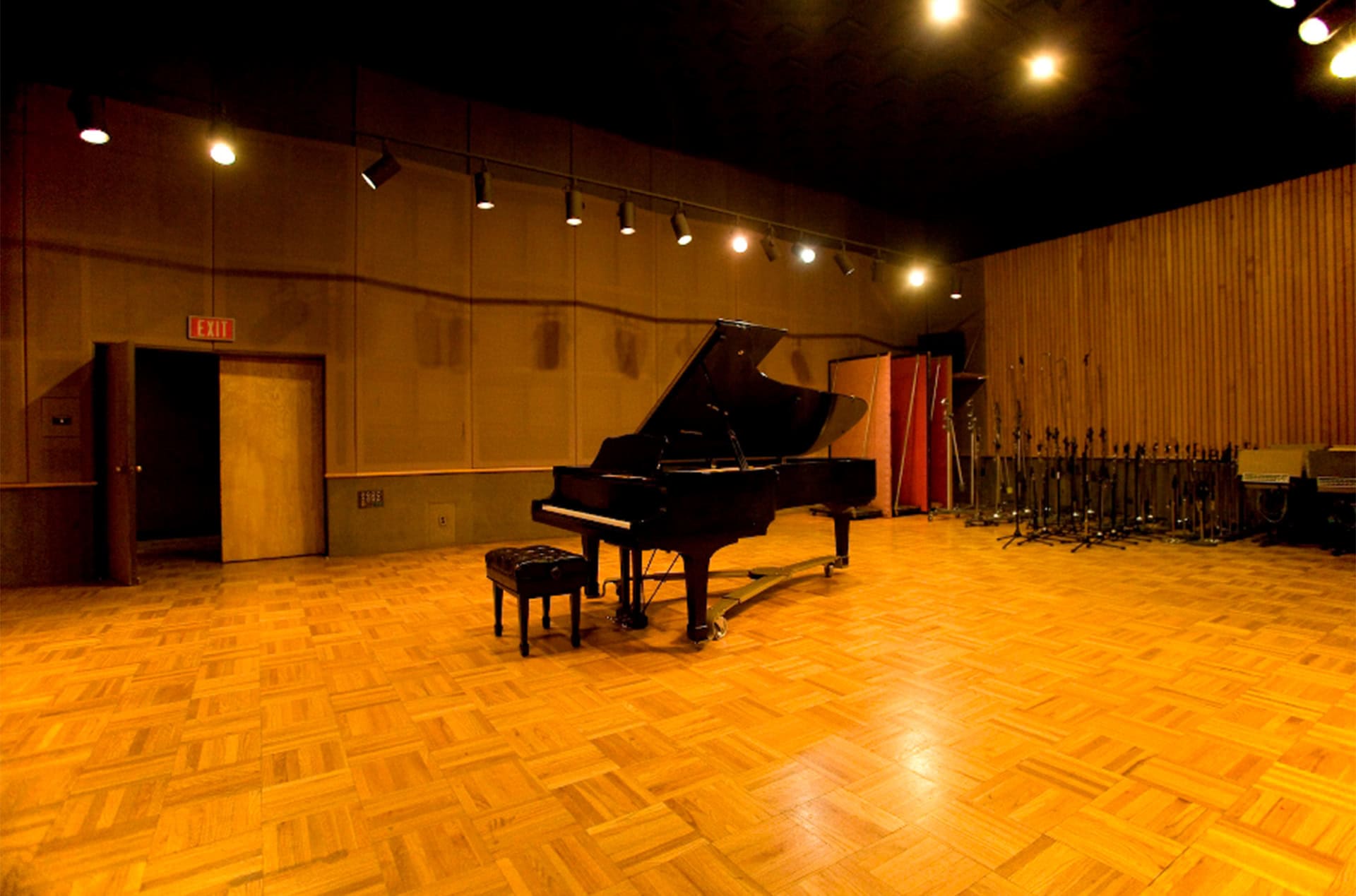
Skallikat, CC BY-SA 3.0
Room reverbs sound great, and they work best when placed on real instruments – IE, the kind that you’d expect to encounter being recorded in a studio. If you need to throw some air on a track, this is one great way to get there.
Back down to earth now, a plate reverb comes from one of the early methods of creating artificial reverb: playing a signal onto a metal plate and recording the resulting ringing out. Of course, the actual plate and its construction have a lot to do with the sound of a plate reverb, and there are lots of things that shape the resulting sound – including the dimensions and material at play.
Plate reverbs sound great on vocals, and can get some extra crack and crispness out of a snare drum, too. You could also try plate reverbs on electric guitar and synths too.
If a room reverb simulates a studio space, a hall reverb simulates a large hall space – the kind that would be used in a musical performance. Perhaps most relevantly, a hall gives the classic sound of classical and orchestral music. But don’t forget, a hall would also qualify for a live, sweaty rock performance as well.
If you’re striving for realism in orchestral music production, you should choose your hall carefully, but a generic hall reverb can certainly work. If you want a sound that’s larger than a room but not a full-on cathedral, then a hall reverb will probably suit.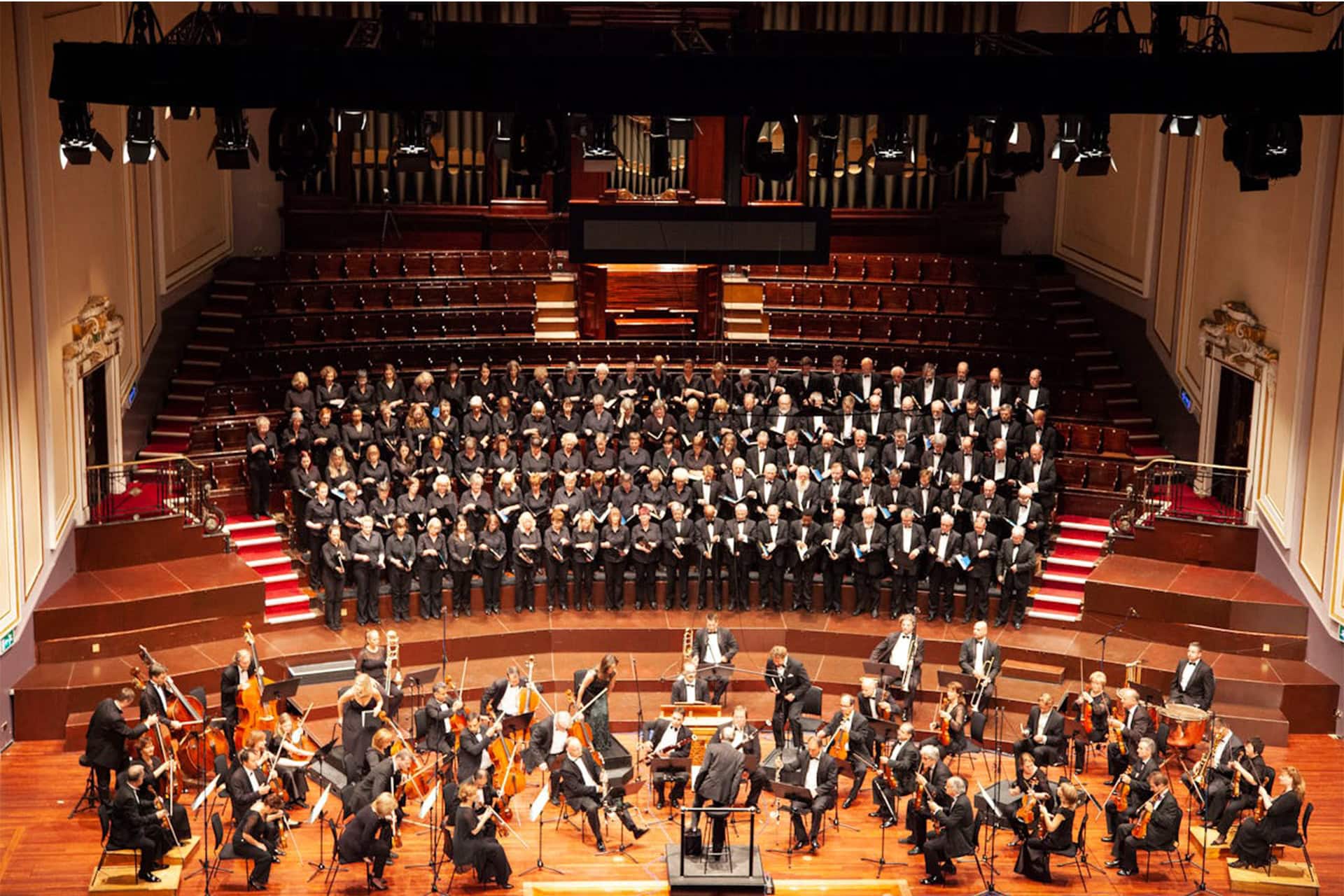
Photo by AfroRomanzo
In the early days of artificial reverb, one of the best solutions was one of the most hard to create but quite obvious: build a huge room and record sound playing in there. A chamber reverb was literally a big chamber with lots of sound reflection, which was recorded as the reverb signal.
Chamber reverbs sound great on vocals, work well on guitar, and are great on orchestral instruments like brass and woodwinds.
Another early reverb, spring reverb sent sound down a coiled spring, where it would take some time to reach the end and then reflect back, by which time it would have also reflected multiple times along the way. Spring reverbs have come in various shapes and sizes, but one great usage was for one to be installed within a guitar amp to provide an in-built reverb signal. This led to the signature sound of surf guitar, for example.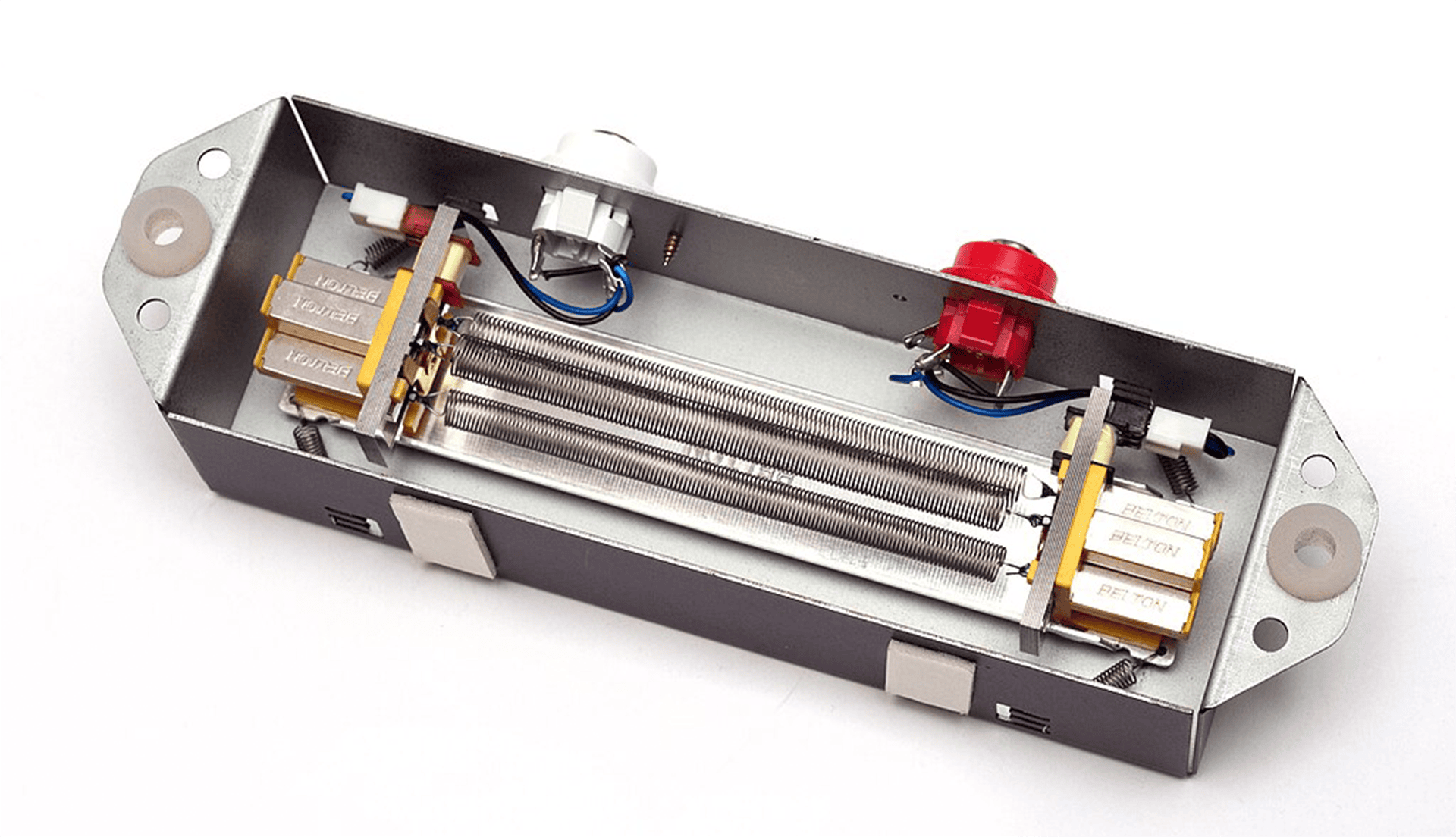
Photo by Ashley Pomeroy
Spring reverb is most at home on guitar – in particular surf guitar – but it can find comfort on vocals, individual drums and synths, making it worth a try.
These extreme reverb types are not for everyday use. We’re talking about the type of plugin that specializes in incredibly long reverb signals, specifically for otherworldly and huge effects.
You won’t find that many of this type of reverb out there – perhaps because they’re so out there. But when you’ve absolutely got to bathe your signal in a reverberant tone, look no further.
Use these huge reverbs when you’ve got a point to prove – with a cinematic soundtrack, for special effects or when soundtracking a sci-fi synthscape.
There are hall reverbs, and then there are hall reverbs built specifically for emulating orchestral music venues – including the characteristic ‘shoebox’ and ‘vineyard’ designs. Some of these plugins will also let you set the position of each source in the virtual hall, for even more accuracy and realism.
An orchestral hall reverb is great for anyone who wants to ‘set it and forget it’, safe in the knowledge that they have the authentic sound of a real concert hall behind them.
Reverb can be hit and miss on different sources. Thanks to variables like an overly reverberant space, or Room Modes changing frequency response, you might have to chop and change a few times to find a reverb that ‘just sits right’ with your particular source.
But with a source-adaptive reverb like smart:reverb, you instantly get a reverb signal that fits perfectly with your audio channel – after just a few seconds of learning. The point of this source-adaptive reverb plugin is to create a reverb signal that perfectly complements the input signal, whatever its characteristics.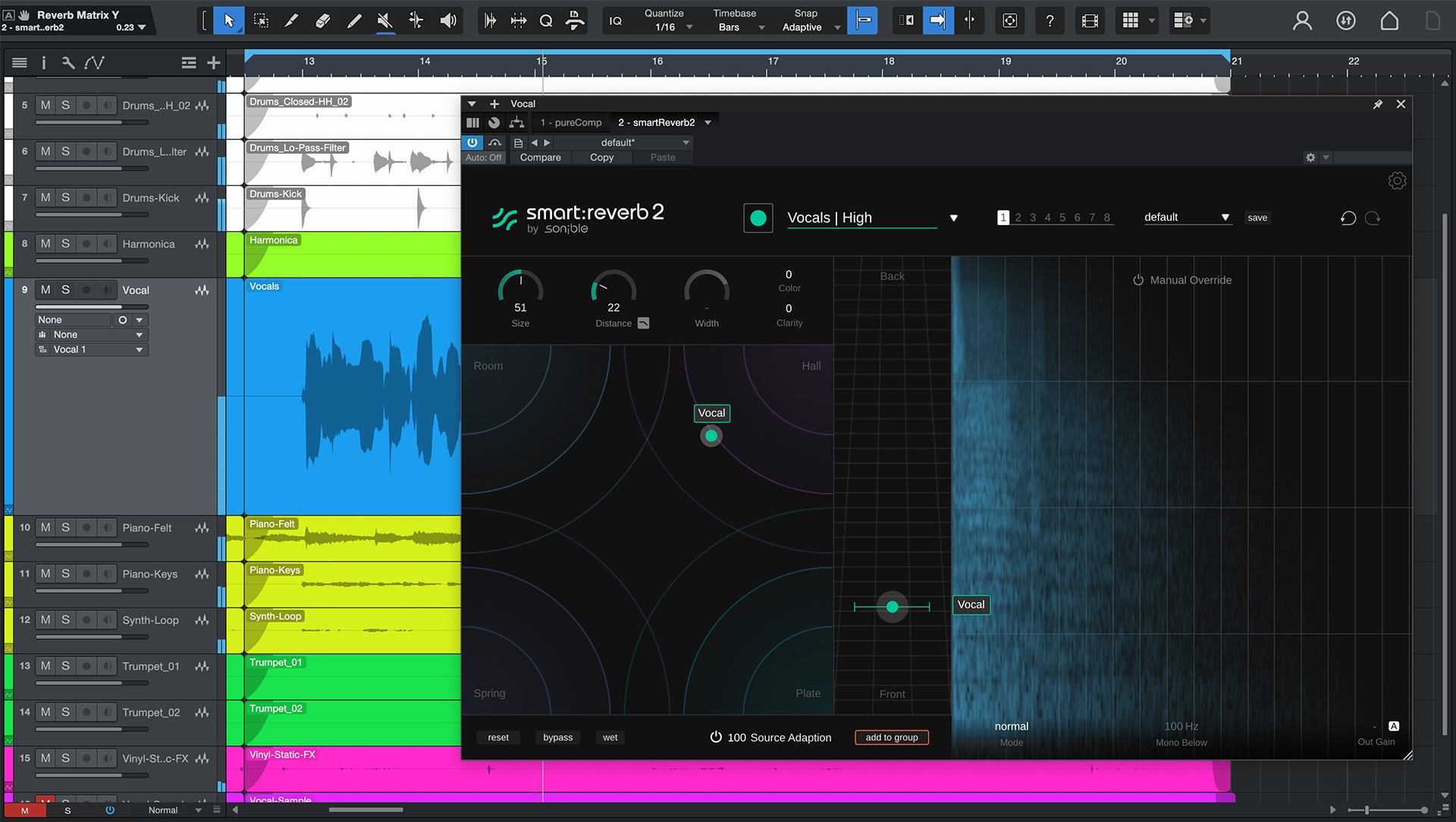
Whatever your audio material, a source-adaptive reverb is likely a great option. It’s great to try something like smart:reverb if you’ve already tried another reverb or two with lacklustre results – or if you want to reach for something you can trust will work from the start.
This type of reverb analyzes the source material and then conjures up a new reverb from scratch – not actually using the input signal to generate the reverberant tail, necessarily, but actually generating a new signal with similar properties. The resultant reverb signal still works well with the input material, but importantly, now its properties and sound can be changed more flexibly, like any synthesis engine.
This type of reverb is more experimental, and can give an unusual sound. You wouldn’t use a re-synthesized reverb on a sound you want to come across as ‘real’ or ‘live’ – but you would feel the benefit in anything else – electronic music especially.
A new form of reverb that has arisen from experimental plugin developers, ‘frozen reverb’ occurs when the developer adds a button that takes whatever signal is in the buffer and keeps its playing. When a freeze is applied with a reverb, the result is a continuing ringing of the sound’s reverb shadow – one that usually goes on indefinitely until you manually stop it.
This experimental effect can be applied in situations where realism isn’t the main aim. You can also record frozen reverb, render it to audio and recycle it for whatever purpose you need later.
Another way to categorize reverbs is in whether they’re analog or digital. An analog reverb would be one we’ve seen examples of so far here: plate reverb, spring reverb and chamber reverb. The room sound you may record as part of a recording would also count as analog reverb – it’s a real reverberant signal, after all.
Digital reverb is practically as good as analog reverb, with added flexibility, but a purist will tend to choose analog wherever possible for that elusive characteristic sound.
Most reverbs today are digital, and some of the very early studio digital reverb units are revered today for their nostalgic sound. Early units such as those by Lexicon are time-honored and can be found emulated in plugin form today. In their attempts to construct an early and realistic-sounding algorithmic reverb, early digital units hit upon a character that is now a sought-after sound in itself.
Use a digital reverb almost whenever you feel like it. This category is so diverse that there’ll be something to match every source if you can find it.
It may be a digital reverb, but the goal of this type of processor is to emulate analog hardware units, giving the sound of these sought-after spaces with more digital recall, flexibility and reproduction. Plates, chambers, springs and more are all available in plugin form.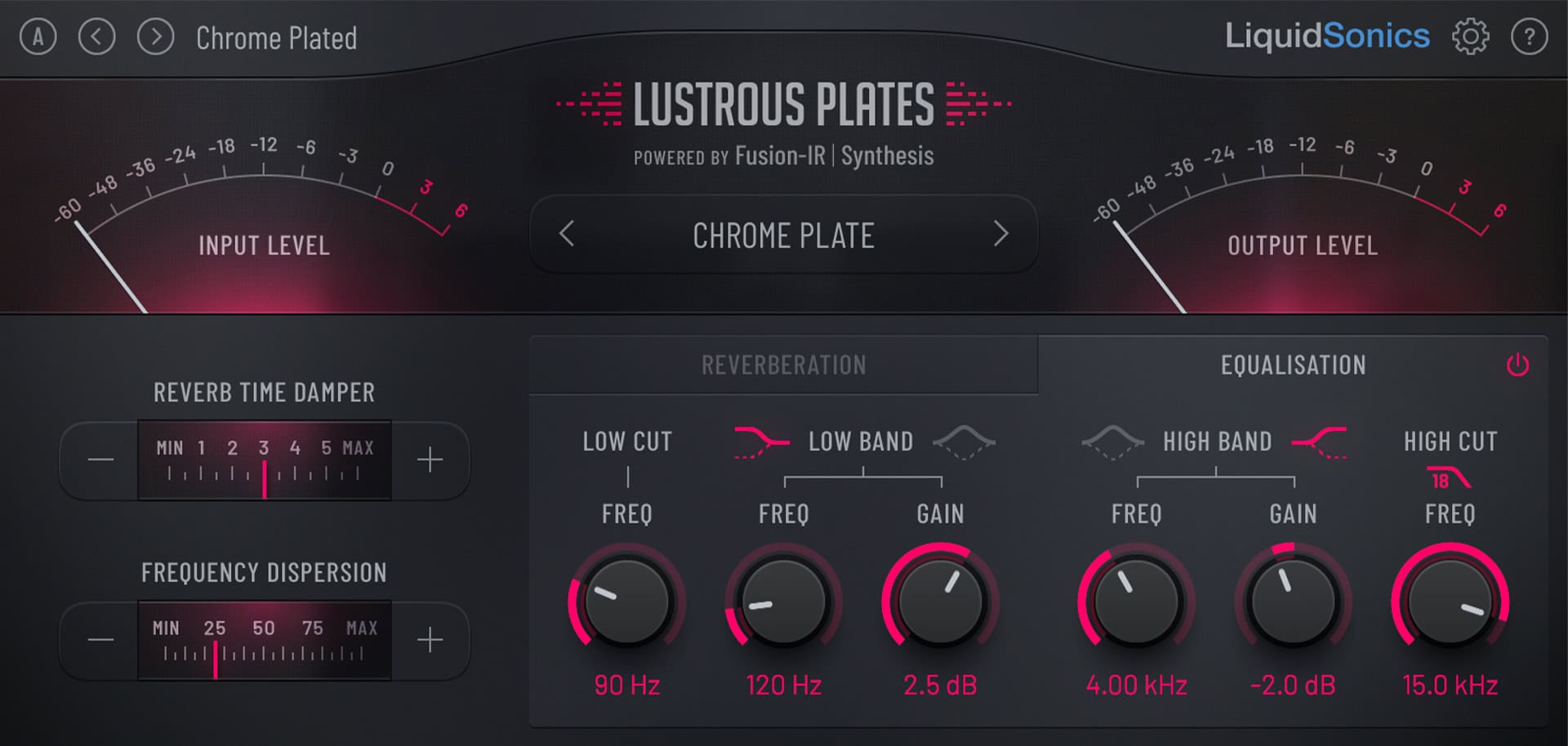
Lustrous Plates, available via Slate Digital
When your goal is realism but you don’t want to break the bank, a relatively cheap and instant-to-use plugin version of an analog reverb can get you the authentic sound you want – without the cost and inconvenience.
If you’ve completed a recording session and have captured the ambience of the room, then this genuine reverb signal is going to fit your instruments like a glove – if it’s appropriate enough.
If you’re working with a real recording, your room mics may be enough for you, or you may wish to apply some artificial reverb as well. As a compromise, you could consider applying that artificial reverb as a tail signal to the room mics themselves – keeping things true to the recording, but more flexible too.
To learn more about reverb and techniques for using it more effectively, check out Techniques for EQing Reverb, Should you put reverb on bass frequencies? and How do Room Modes Work in Acoustic Spaces?